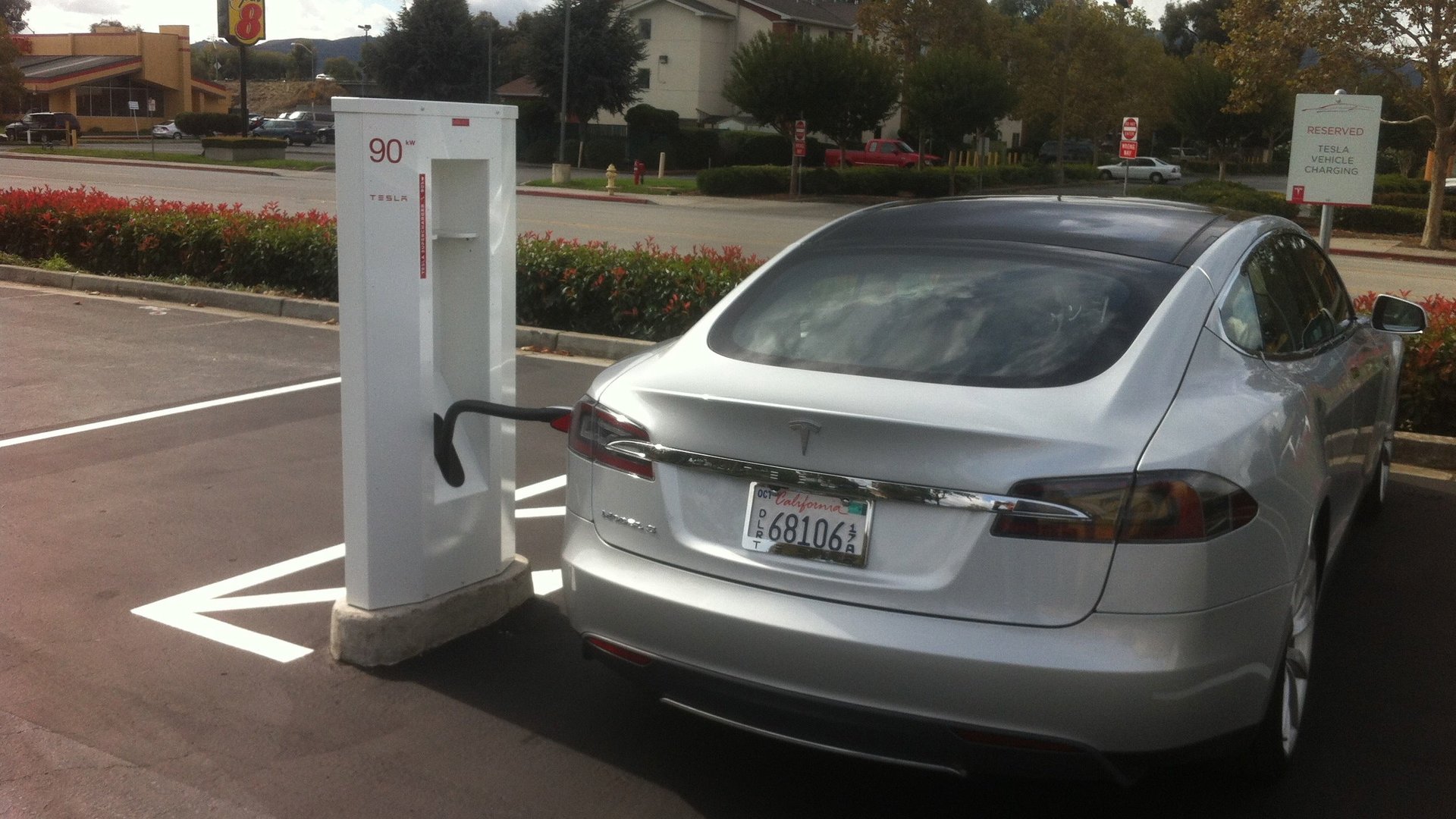Elon Musk: Buy a Tesla electric car and you’ll survive the zombie apocalypse
Good news: when the zombie apocalypse comes, you’ll still be able to drive your Model S electric sports sedan coast to coast in the US, Tesla Motors chief executive Elon Musk said today in announcing a rapid expansion of Superchargers, the company’s network of battery charging stations.


Good news: when the zombie apocalypse comes, you’ll still be able to drive your Model S electric sports sedan coast to coast in the US, Tesla Motors chief executive Elon Musk said today in announcing a rapid expansion of Superchargers, the company’s network of battery charging stations.
That’s because the Silicon Valley automaker is powering its 480-volt Superchargers with solar panels and storing the electricity in lithium-ion battery packs. So even if the walking dead take out the power grid, you’re good to go.
“It’s possible to drive anywhere in the country, pack you lunch, stay with friends and leave your wallet behind,” said Musk during a conference call, noting the Supercharger service remains free for Model S owners.
Tesla began rolling out the Supercharger network in 2012. It initially opened stations on highway routes in California and added locations on the East Coast this year. Today, Musk said the company was speeding up deployment and would have enough stations for coast-to-coast travel by the end of 2013.
By 2015, Supercharger stations would connect 98% of the US and southern Canada, the company said. Ultimately, Tesla plans to install about 200 Supercharger stations in the US and southern Canada that will offer between 2,000 and 3,000 charging ports. It will take another couple of years to install solar arrays and storage packs at all the stations, Musk said. He noted that Tesla will announce a European network once the company begins delivering the Model S there in July.
Tesla has also improved the technology of the Superchargers so that drivers of a Model S with a 60 kilowatt-hour battery pack can recharge two-thirds of its capacity in 20 minutes.
Of course, you’ll need to come up with enough cash to buy or lease a $70,000 Model S, because the network only works with that car. “It’s a very high powered charger and it needs to do a complicated ultra high-speed tango with the pack and unless you have a close pairing with the Supercharger and the battery pack, you can’t charge,” Musk said. “We can’t wait for others to agree for our strategy. Other manufacturers can either copy us or join us.”
California will initially have the densest network as Tesla builds stations along parallel highways up and down the coast. Currently, most of the stations are along Interstate 5 through the state’s Central Valley. “Driving the I-5 is fast but a little bleak.” Musk said. “But if you drive Highway 1 or the 101 it’s really awesome.”
Musk didn’t mention Better Place, Tesla’s erstwhile rival that filed for bankruptcy Sunday. But the ghost of the Silicon Valley-born electric car infrastructure startup was hovering over the press conference. Better Place spent nearly a billion dollars trying to build a network of battery swap stations in two small countries, Israel and Denmark, to enable electric car drivers to travel cross-country.
Tesla, Musk said today, will be able to do the same in the continental US for just $60 million.